Design of a Piezoelectric Pump Driven by Inertial Force of Vibrator Supported by a Slotted Beam
Abstract
:1. Introduction
2. Design, Fabrication, and Operating Principle
2.1. Design
2.2. Fabrication
2.3. Operation Principle
3. Analysis and Modeling
3.1. Finite Element Analysis
3.2. Theoretical Model
4. Experimental Setup
5. Results and Discussion
5.1. Stiffness Characteristics of the Slotted Beam
5.2. Influence of the Mass Block
5.3. Frequency Response
5.4. Influence of the Driving Voltage
6. Conclusions
Author Contributions
Funding
Institutional Review Board Statement
Informed Consent Statement
Data Availability Statement
Conflicts of Interest
References
- Kim, C.N. Internal pressure characteristics and performance features of the piezoelectric micropumps with the diffuser/nozzle and electromagnetic resistance. Comput. Fluids 2014, 104, 30–39. [Google Scholar] [CrossRef]
- Li, H.Y.; Liu, J.K.; Li, K.; Liu, Y.X. A review of recent studies on piezoelectric pumps and their applications—ScienceDirect. Mech. Syst. Signal Processing 2021, 151, 107393. [Google Scholar] [CrossRef]
- Wang, Y.N.; Fu, L.M. Micropumps and biomedical applications—A review. Microelectron. Eng. 2018, 195, 121–138. [Google Scholar] [CrossRef]
- Mohith, S.; Karanth, P.N.; Kulkarni, S.M. Recent trends in mechanical micropumps and their applications: A review. Mechatronics 2019, 60, 34–55. [Google Scholar] [CrossRef]
- Liu, G.J.; Shen, C.L.; Yang, Z.G. A disposable piezoelectric micropump with high performance for closed-loop insulin therapy system. Sens. Actuators A Phys. 2010, 163, 291–296. [Google Scholar] [CrossRef]
- Bußmann, A.; Thalhofer, T.; Hoffmann, S.; Daum, L.; Surendran, N.; Hayden, O.; Hubbuch, j.; Richter, M. Microfluidic Cell Transport with Piezoelectric Micro Diaphragm Pumps. Micromachines 2021, 12, 1459. [Google Scholar] [CrossRef] [PubMed]
- Tseng, L.Y.; Yang, A.S.; Lee, C.Y.; Cheng, C.H. Investigation of a piezoelectric valveless micropump with an integrated stainless-steel diffuser/nozzle bulge-piece design. Smart Mater. Struct. 2013, 22, 085023. [Google Scholar] [CrossRef]
- Liu, C.; Zhu, Y.C.; Wu, C.W. Optimization of a synthetic jet based piezoelectric air pump and its application in electronic cooling. Microsyst. Technol. 2020, 26, 1–10. [Google Scholar] [CrossRef]
- Bertin, M.; Plummer, A.; Bowen, C.; Johnston, N.; Griffiths, M.; Bickley, D. A dual lane piezoelectric ring bender actuated nozzle-flapper servo valve for aero engine fuel metering. Smart Mater. Struct. 2019, 28, 115015. [Google Scholar] [CrossRef]
- Lee, D.S.; Ko, J.S.; Kim, Y.T. Bidirectional pumping properties of a peristaltic piezoelectric micropump with simple design and chemical resistance. Thin Solid Film. 2004, 468, 285–290. [Google Scholar] [CrossRef]
- Kim, J.H.; Kang, C.J.; Kim, Y.S. A disposable polydimethylsiloxane-based diffuser micropump actuated by piezoelectric-disc. Microelectron. Eng. 2004, 71, 119–124. [Google Scholar] [CrossRef]
- Ma, H.K.; Hou, B.R.; Wu, H.Y.; Lin, C.Y.; Gao, J.J.; Kou, M.C. Development and Application of a Diaphragm Micro-Pump with Piezoelectric Device. Microsyst. Technol. 2008, 14, 1001–1007. [Google Scholar] [CrossRef] [Green Version]
- Wang, X.Y.; Ma, Y.T.; Yan, G.Y.; Huang, D.; Feng, Z.H. High flow-rate piezoelectric micropump with two fixed ends polydimethylsiloxane valves and compressible spaces. Sens. Actuators A Phys. 2014, 218, 94–104. [Google Scholar] [CrossRef]
- Wang, J.T.; Zhao, X.L.; Chen, X.F.; Yang, H.R. A Piezoelectric Resonance Pump Based on a Flexible Support. Micromachines 2019, 10, 169. [Google Scholar] [CrossRef] [PubMed] [Green Version]
- Lee, D.G.; Or, S.W.; Carman, G.P. Design of a Piezoelectric-hydraulic Pump with Active Valves. J. Intell. Mater. Syst. Struct. 2004, 12, 107–115. [Google Scholar] [CrossRef]
- Woo, J.M.; Sohn, D.K.; Ko, H.S. Performance and Flow Analysis of Small Piezo Pump. Sens. Actuators A Phys. 2020, 301, 111766. [Google Scholar] [CrossRef]
- Valdovinos, J.; Carman, G.P. Development of a low-voltage piezohydraulic pump for compact hydraulic systems. Smart Mater. Struct. 2015, 24, 125008. [Google Scholar] [CrossRef]
- Park, J.H.; Seo, M.Y.; Ham, Y.B.; Yun, S.N.; Kim, D.I. A study on high-output piezoelectric micropumps for application in DMFC. J. Electroceramics 2013, 30, 102–107. [Google Scholar] [CrossRef]
- Yang, Y.; Chen, J.; Ren, Y.J.; Feng, Z.H. Valve improvement for high flow rate piezoelectric pump with PDMS film valves. Sens. Actuators A Phys. 2018, 283, 245–253. [Google Scholar]
- Yu, H.H.; Hui, T.H. Solid-liquid coupled vibration characteristics of piezoelectric hydroacoustic devices. Sens. Actuators A Phys. 2016, 238, 177–195. [Google Scholar]
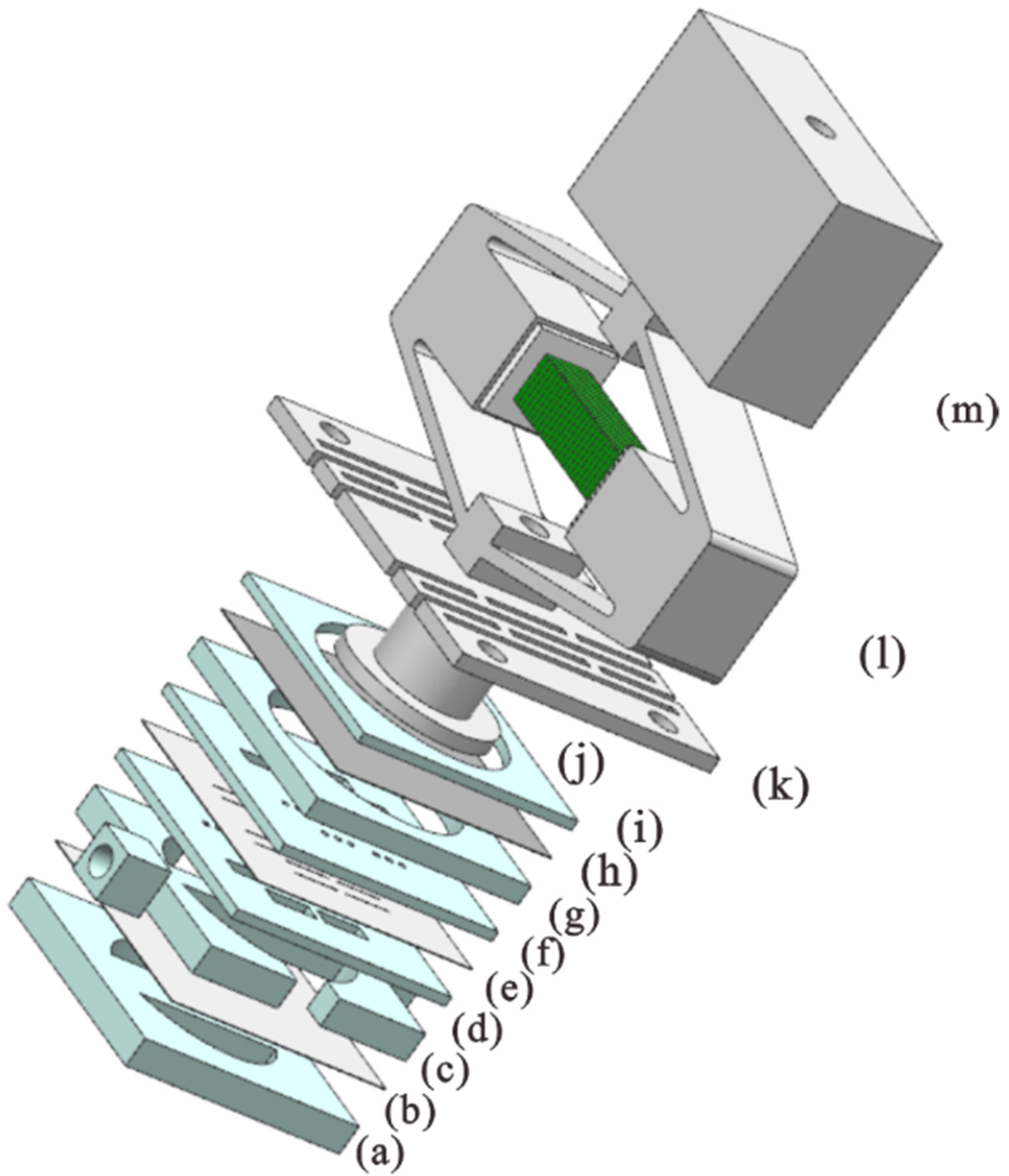
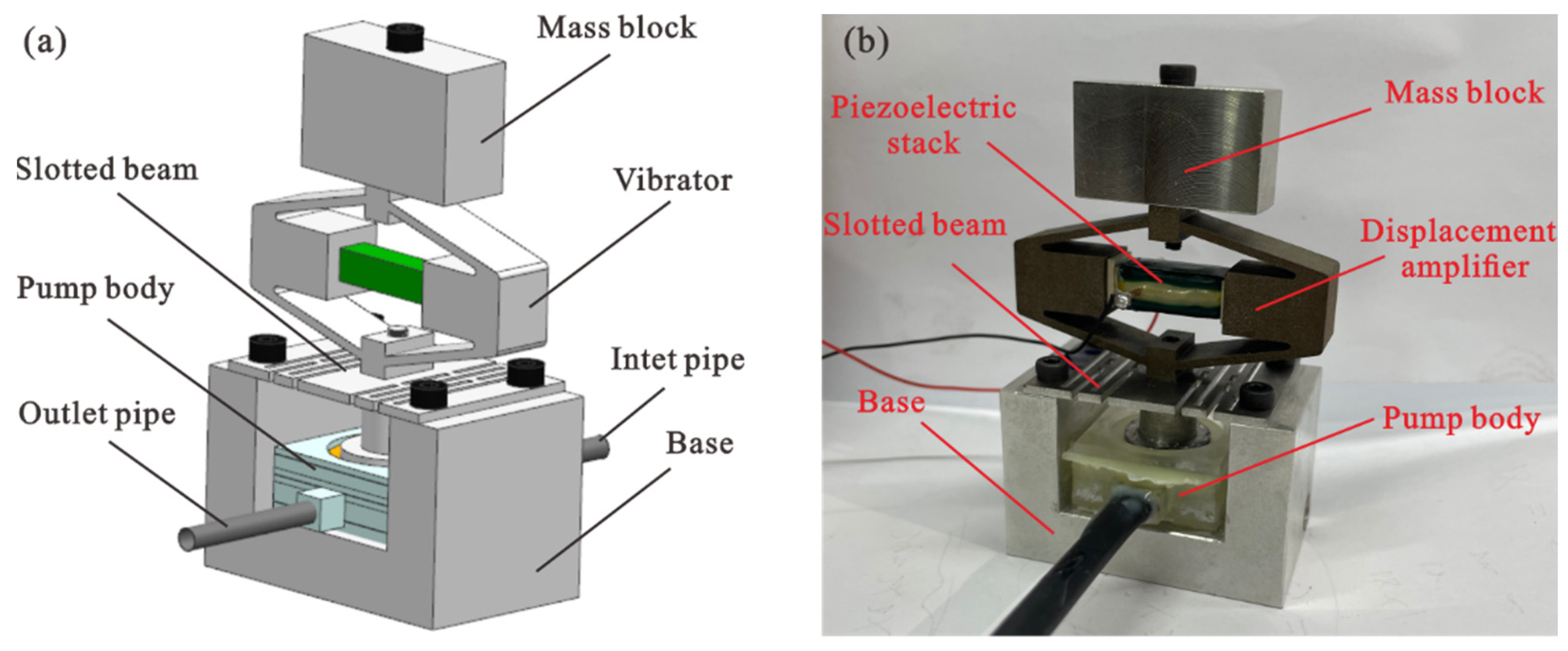
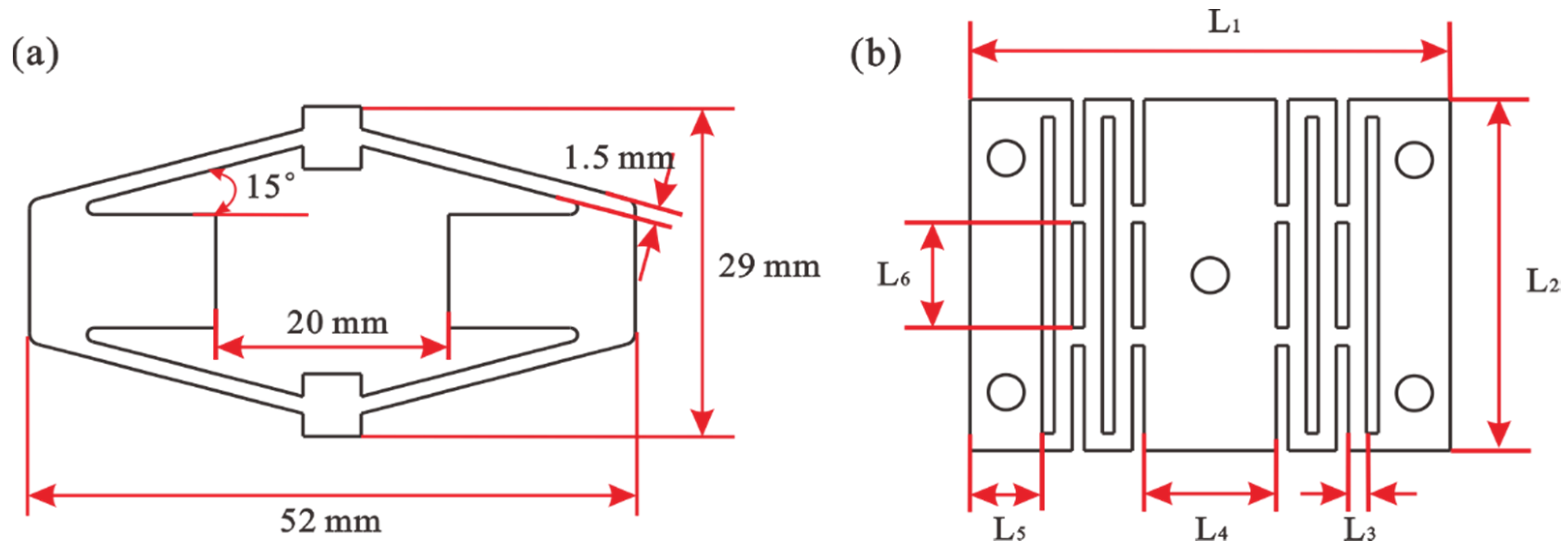
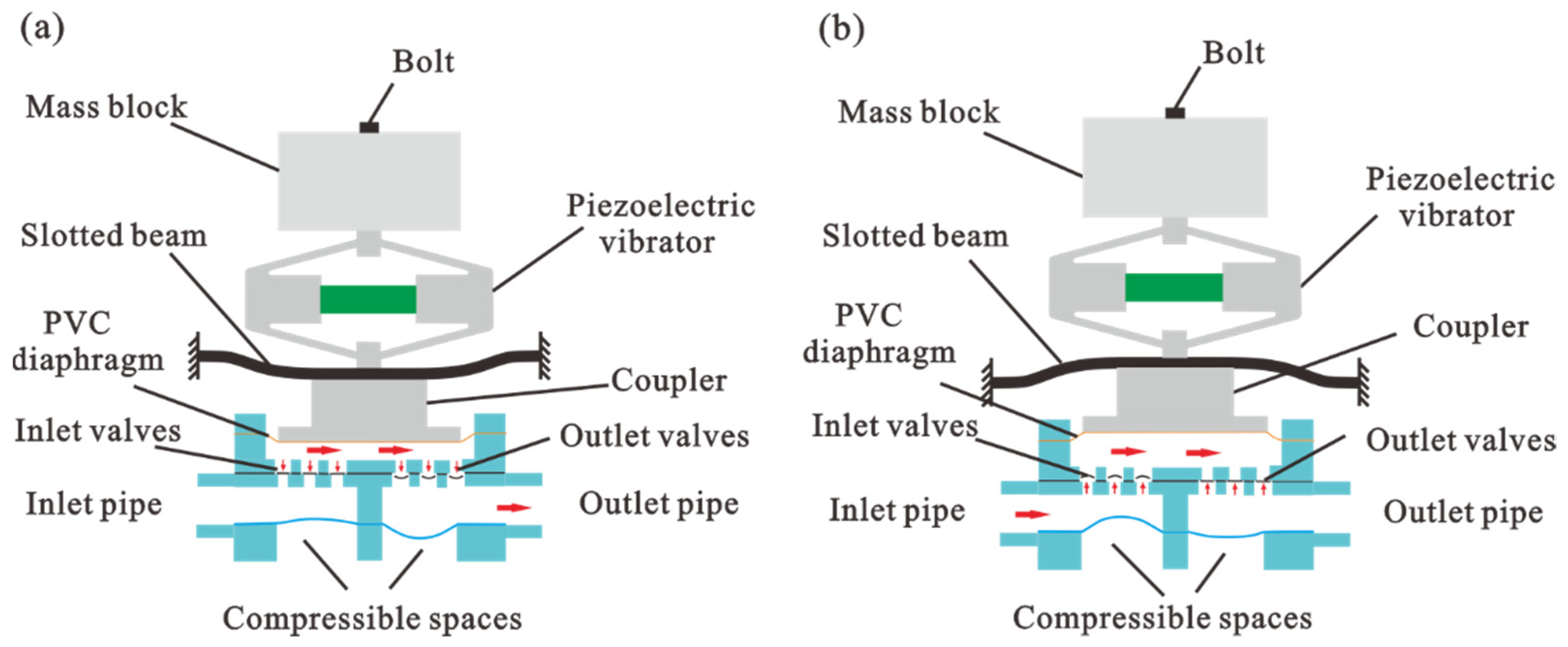


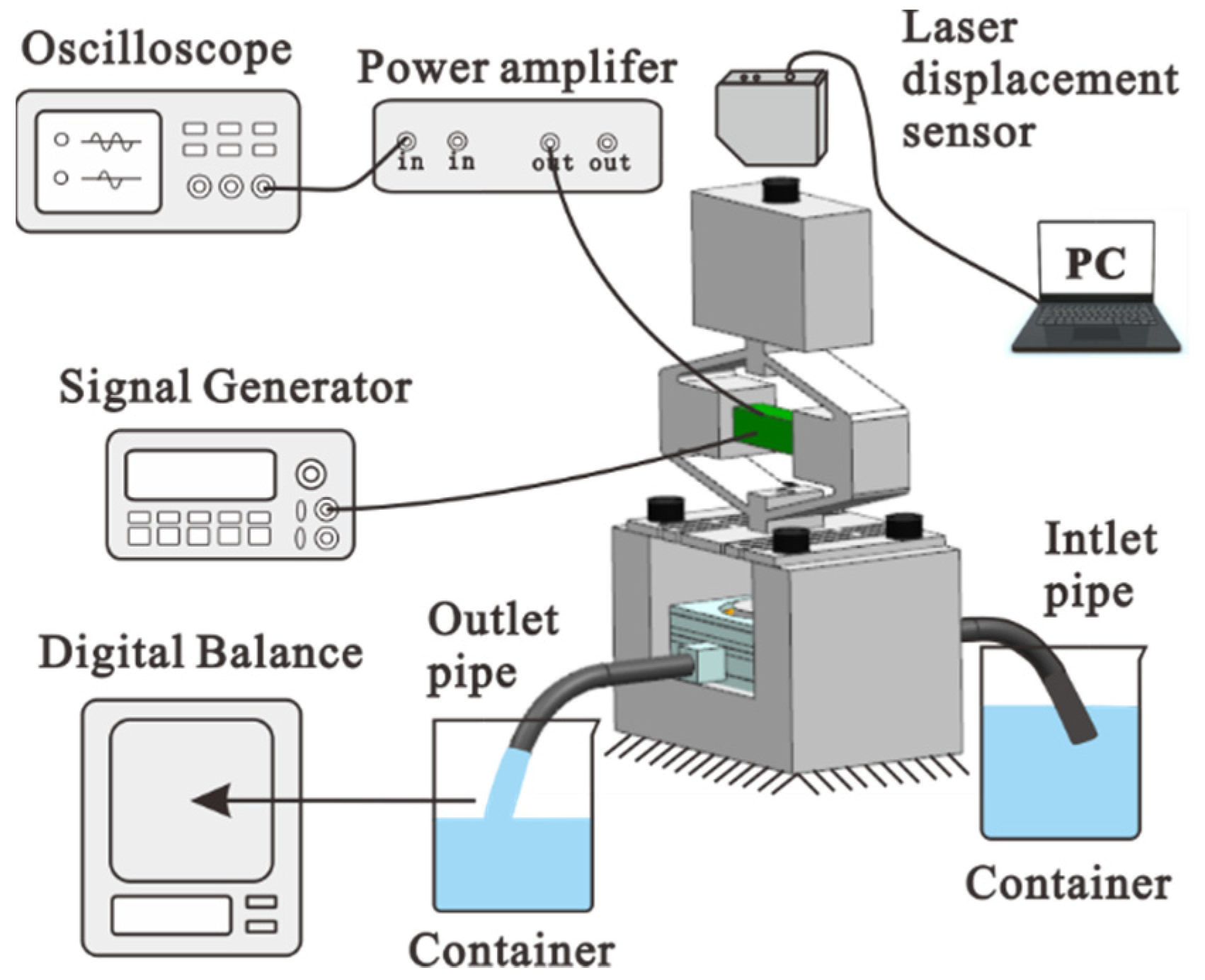
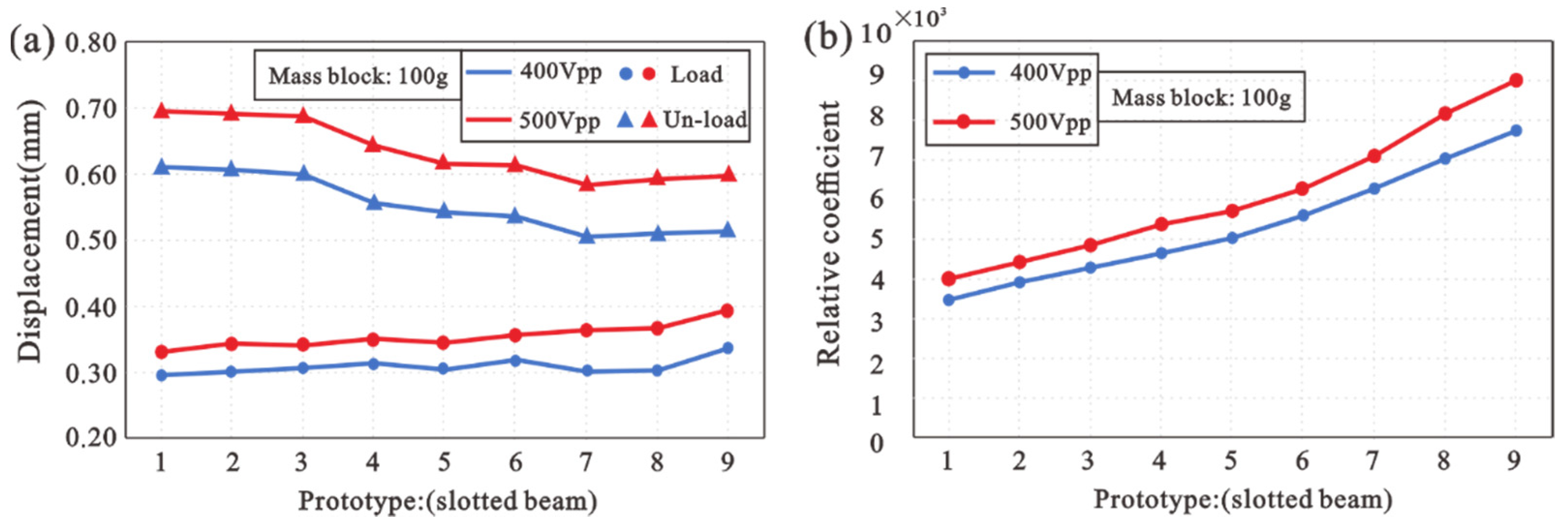


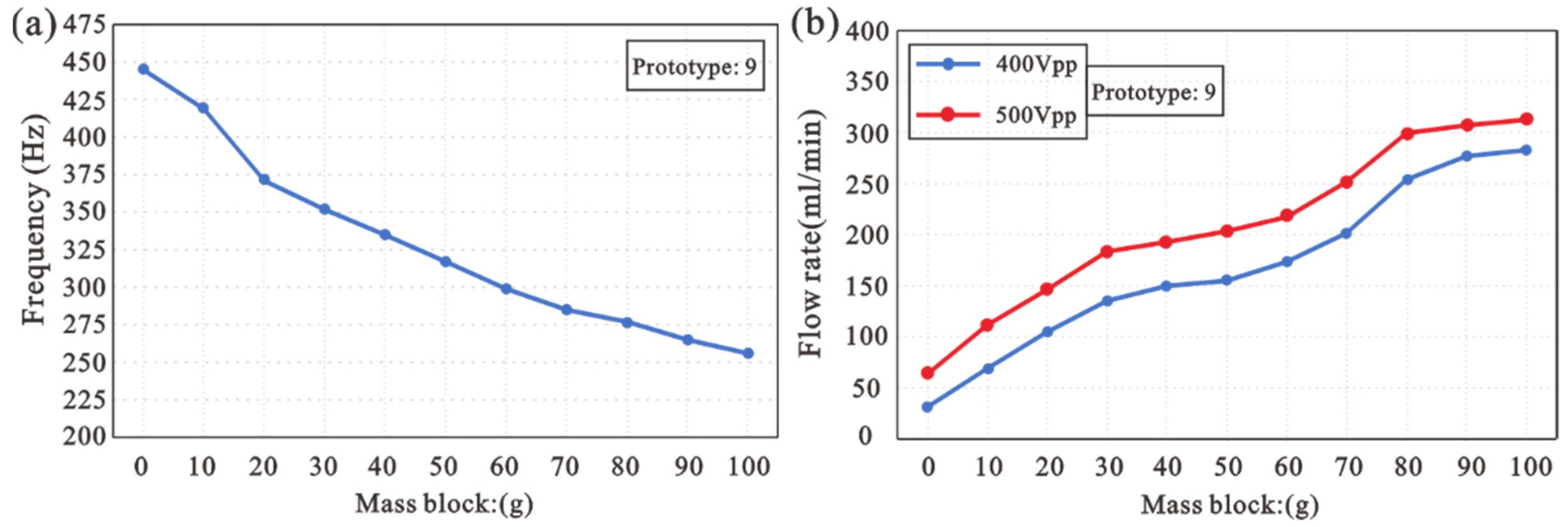

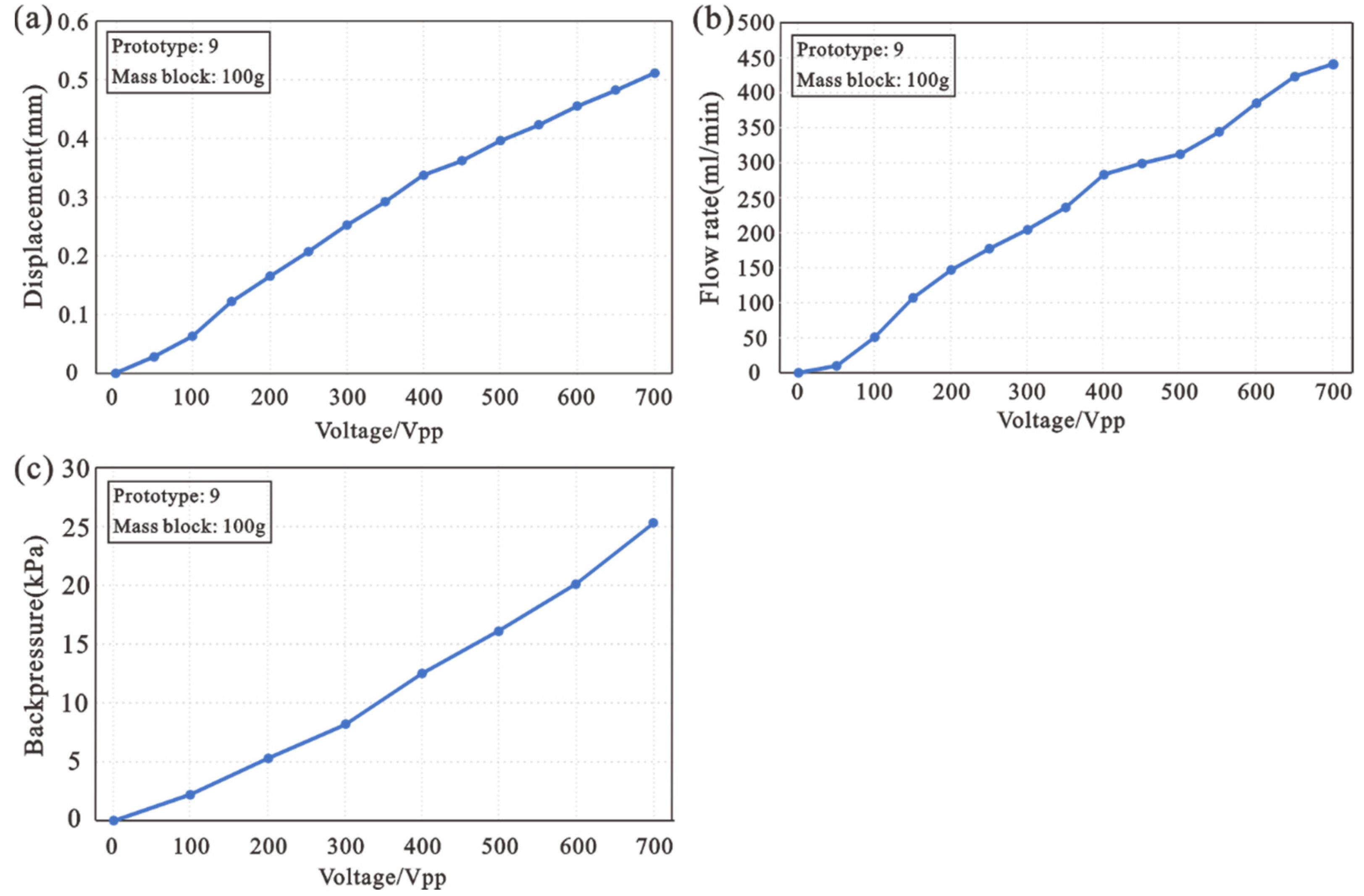
| Prototype | L3 | L4 | L6 | |
|---|---|---|---|---|
| 1 | 11 | 1.5 | 3 | 321.6 |
| 2 | 10.4 | 1.6 | 3 | 345.2 |
| 3 | 9.8 | 1.7 | 3 | 368.4 |
| 4 | 11 | 1.5 | 6 | 412.4 |
| 5 | 10.4 | 1.6 | 6 | 442.3 |
| 6 | 9.8 | 1.7 | 6 | 471.8 |
| 7 | 11 | 1.5 | 9 | 537.1 |
| 8 | 10.4 | 1.6 | 9 | 575.5 |
| 9 | 9.8 | 1.7 | 9 | 610.9 |
| Material | Young’s Modulus (GPa) | Poisson’s Ratio | Density (kg/m3) |
|---|---|---|---|
| 304 stainless | 195 | 0.247 | 7900 |
| PZT-4 | 0.32 | 7500 | |
| 65 Manganese steel | 210 | 0.3 | 7800 |
Publisher’s Note: MDPI stays neutral with regard to jurisdictional claims in published maps and institutional affiliations. |
© 2022 by the authors. Licensee MDPI, Basel, Switzerland. This article is an open access article distributed under the terms and conditions of the Creative Commons Attribution (CC BY) license (https://creativecommons.org/licenses/by/4.0/).
Share and Cite
Zhang, Y.; Wang, X.; Liu, S.; Pan, Q. Design of a Piezoelectric Pump Driven by Inertial Force of Vibrator Supported by a Slotted Beam. Machines 2022, 10, 460. https://doi.org/10.3390/machines10060460
Zhang Y, Wang X, Liu S, Pan Q. Design of a Piezoelectric Pump Driven by Inertial Force of Vibrator Supported by a Slotted Beam. Machines. 2022; 10(6):460. https://doi.org/10.3390/machines10060460
Chicago/Turabian StyleZhang, Yong, Xiaoliang Wang, Shanlin Liu, and Qiaosheng Pan. 2022. "Design of a Piezoelectric Pump Driven by Inertial Force of Vibrator Supported by a Slotted Beam" Machines 10, no. 6: 460. https://doi.org/10.3390/machines10060460
APA StyleZhang, Y., Wang, X., Liu, S., & Pan, Q. (2022). Design of a Piezoelectric Pump Driven by Inertial Force of Vibrator Supported by a Slotted Beam. Machines, 10(6), 460. https://doi.org/10.3390/machines10060460







